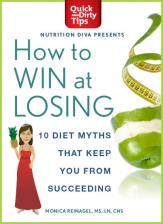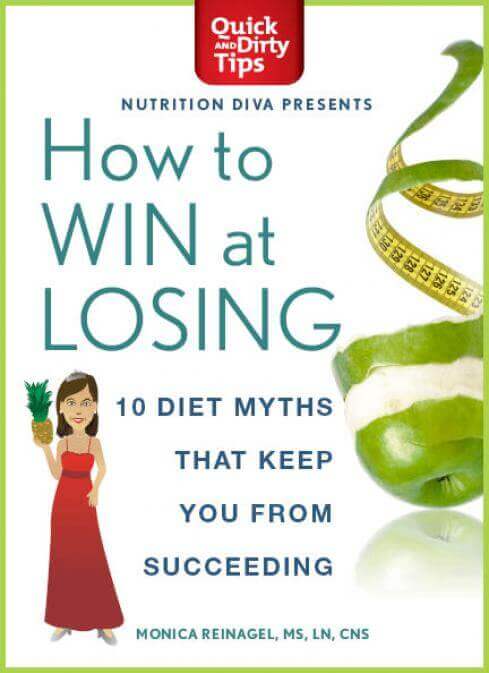Which Foods Are Highest in Pesticides
Other than fruits and vegetables, what foods should you buy organic? Learn the best way to prioritize your organic dollars
Monica Reinagel, MS, LD/N, CNS
Listen
Which Foods Are Highest in Pesticides

When we talk about pesticides in foods, we often focus on fresh produce. For example, I’ve written in the past about the so-called Dirty Dozen, which are the fruits and vegetables that tend to be highest in pesticide residues. Recently, Nancy wrote in to ask how much we need to be concerned about pesticides in food other than fruits and vegetables, such as grain-based foods or dairy products.
How to Prioritize your Organic Purchase
Of course, one way to avoid exposure to pesticides in foods is simply to choose organic foods. But a 100% organic diet may not be realistic or affordable. (See also: Are Organic Foods More Nutritious?) If you know which foods are most likely to contain harmful pesticides, you can prioritize your organic purchases—or even avoid those foods altogether.
According to the FDA’s most recent Pesticide Monitoring Report (2008), your biggest dietary exposure to pesticides is from non-organic produce, especially those fruits and vegetables that are higher in pesticide residues—such as apples, strawberries, celery, peaches, and spinach.
(See the Environmental Working Group complete list of the Dirty Dozen and the Clean Fifteenopens PDF file .)
Not long ago, a reader wrote to ask why the FDA allows these fruits and vegetables to be sold if they are so high in pesticides. The answer is that, even though these foods have higher pesticide residues than others, the amount still does not exceed what the FDA considers to be “safe” limits.
Concerned About Pesticides? Be Sure to Check Where It’s Grown
Of course, it is possible for foods to be in violation of legal limits and the FDA regularly samples foods in order to catch violators and remove dangerous products from the marketplace. Certain countries have been found to have high violation rates—produce imported from Guatemala, Ecuador, and Taiwan, for example, was 10 to 15 times more likely than domestic produce to contain pesticide residues that are in violation of the FDA’s limits. In particular, imported chile peppers, basil, and papaya were especially likely to be unacceptably high in pesticides. If you’re concerned about pesticide residues in non-organic produce, be sure to take note of the Country of Origin label that is required on all fresh foods.
What Other Foods are High in Pesticides?
Besides produce, what other foods may contain pesticides?
Grains
Grains and grain products are the next most likely source, with pesticide residues found in about 20% of domestic samples—but none in excess of allowable limits. What products and breakfast cereals were the most likely to contain pesticide residues and oat-based and pasta products were the least likely. Interestingly, imported grains are only half as likely to be contaminated as domestic sources. But overall, the percentage of grain products with detectable pesticide residues was about 1/3 lower in 2008 than the previous year.
Seafood
About 14% of both domestically harvested fish and imported fish had detectable pesticide residues—and this also is significantly better than the previous year. None of the shellfish tested had any detectable traces.
Dairy
This may surprise you: None of the milk or eggs sampled contained any detectable pesticide residues. Of course, there are other reasons you may prefer to choose organic dairy products, such as the fact that organically raised cows are not given hormones or antibiotics.
Other Foods
Among the “miscellaneous” foods, which included nuts, seeds, oils, spices, condiments, coffee, tea, beer, and various dietary supplements, most had no detectable residues. Imported chocolate, tea, and refined vegetable oil were among those that did.
Read the latest Pesticide Monitoring Report
Children are More Vulnerable to Pesticides
Pesticides are definitely nasty chemicals and the more you can minimize your exposure, the better. This is especially true for young children. In 1993, the National Academy of Sciences estimated that 50% of our lifetime exposure to pesticides occurs before the age of 5. Why? Children consume more fruit, juice, and vegetables per kilogram of body weight than adults. Giving babies and young children organic fruits and vegetables can dramatically reduce lifetime pesticide exposure.
More on Kids and Pesticide Exposure
Putting Pesticide Concerns in Perspective
The information I’m sharing with you here can help you to prioritize your efforts to avoid pesticides. However, I think it’s important to put this information in perspective. It’s estimated that fewer than 4% of cancer cases can be attributed to chemical exposure–and that number includes all the people who work in chemical plants or other occupations with high exposure to chemicals. By contrast, unhealthy diets are implicated in up to a third of all cancer cases.
In other words, do what you can to minimize your exposure, but don’t let fears over pesticide residues keep you from eating (or feeding your kids) fruits and vegetables. Making healthy food choices—such as fresh fruits, vegetables, whole grains, nuts, seeds, and other minimally processed foods—has a more profound impact on your health risk than eating only organic foods.
Food is Not Your Only Source of Pesticide Exposure
Finally, keep in mind that food is not the only way in which we are exposed to pesticides. If you live in an agricultural area, for example, you may want to have your water tested. (See also: Is Your Drinking Water Safe?).
And even if you don’t apply any chemical pesticides to your own lawn or garden, they are probably used by your neighbors, in your workplace or apartment building, parks, shops, and restaurants that you frequent, and other common areas. Just walking around the world, you’re likely to pick up a fair amount of pesticide residue on your shoes. If you wear your shoes into your home, pesticides are deposited on your carpets, where you or your kids may sit or go barefoot. Leaving shoes at the door is an effective way to reduce the level of chemicals in your home.
See also the EPA’s Citizen’s Guide to Reducing Pesticide Exposure
 Keep in Touch
Keep in Touch
Questions? Comments? Suggestions for a future topic? Post them below in Comments or come join the discussion on the Nutrition Diva Facebook Page. I answer a lot of listener questions in my free weekly newsletter, so if you’ve sent a question my way, be sure you’re signed up to receive that.

 Keep in Touch
Keep in Touch